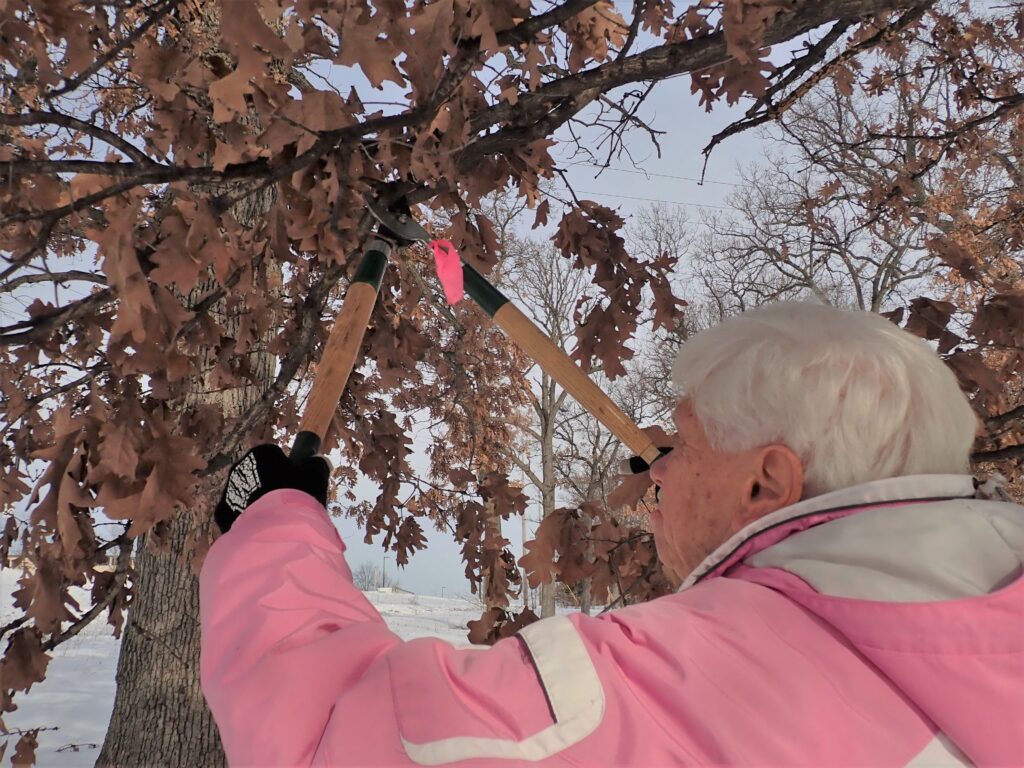By Kyoko Scanlon, DNR Forest Pathologist, Fitchburg, Kyoko.Scanlon@wisconsin.gov; and Paul Cigan, DNR Forest Health Specialist, Hayward, Paul.Cigan@wisconsin.gov

Prune oak trees during winter when oak wilt disease-carrying insects are inactive. Photo credit: Wisconsin DNR
It’s pruning season! If your trees need to be pruned, now it the time to do it. Come April, there’s high risk of harmful pests spreading tree diseases such as oak wilt.
It is ideal to prune trees in the winter since branch damage or weak branch structure is more visible and because pests that cause harmful tree diseases are inactive in cold temperatures. One such disease is oak wilt, a fatal disease that spreads through tiny sap-feeding beetles attracted to open wounds on trees.
Oak wilt is common in the lower two-thirds of the state and spreads farther north each year. Oak wilt is Wisconsin’s most destructive oak disease, killing thousands of healthy trees annually.
“What’s encouraging about oak wilt is that preventing and slowing its spread takes only the most basic measures,” said Paul Cigan, DNR Forest Health Specialist.
Cigan encourages Wisconsin residents to only prune trees in winter. Pruning oaks during April through July places them at the greatest risk for oak wilt infection and should be avoided when possible.
Cigan also suggests keeping firewood transport local and consulting a certified professional if you suspect oak wilt by finding oaks with sudden, mid-to-late summer leaf drop.
Prune young trees to establish a central trunk, proper trunk taper and good branch structure and spacing. Prune older trees to remove dead or hazardous limbs. In addition, it’s recommended to prune landscape trees throughout their lifetime to maintain strong structure and remove dead wood.
Follow the DNR’s Oak Harvesting Guidelines to reduce risk of oak wilt while oak harvesting in a forest setting.
